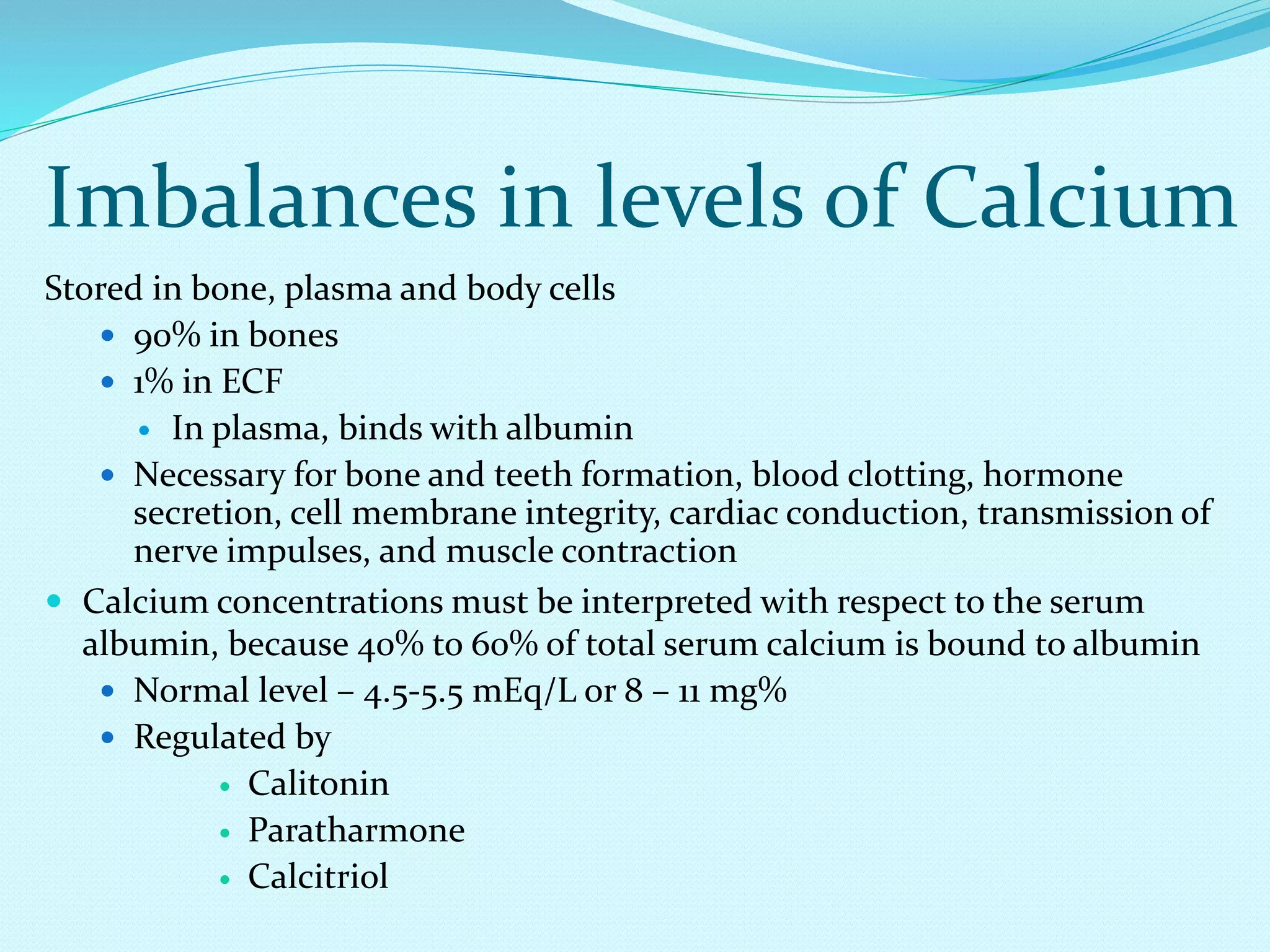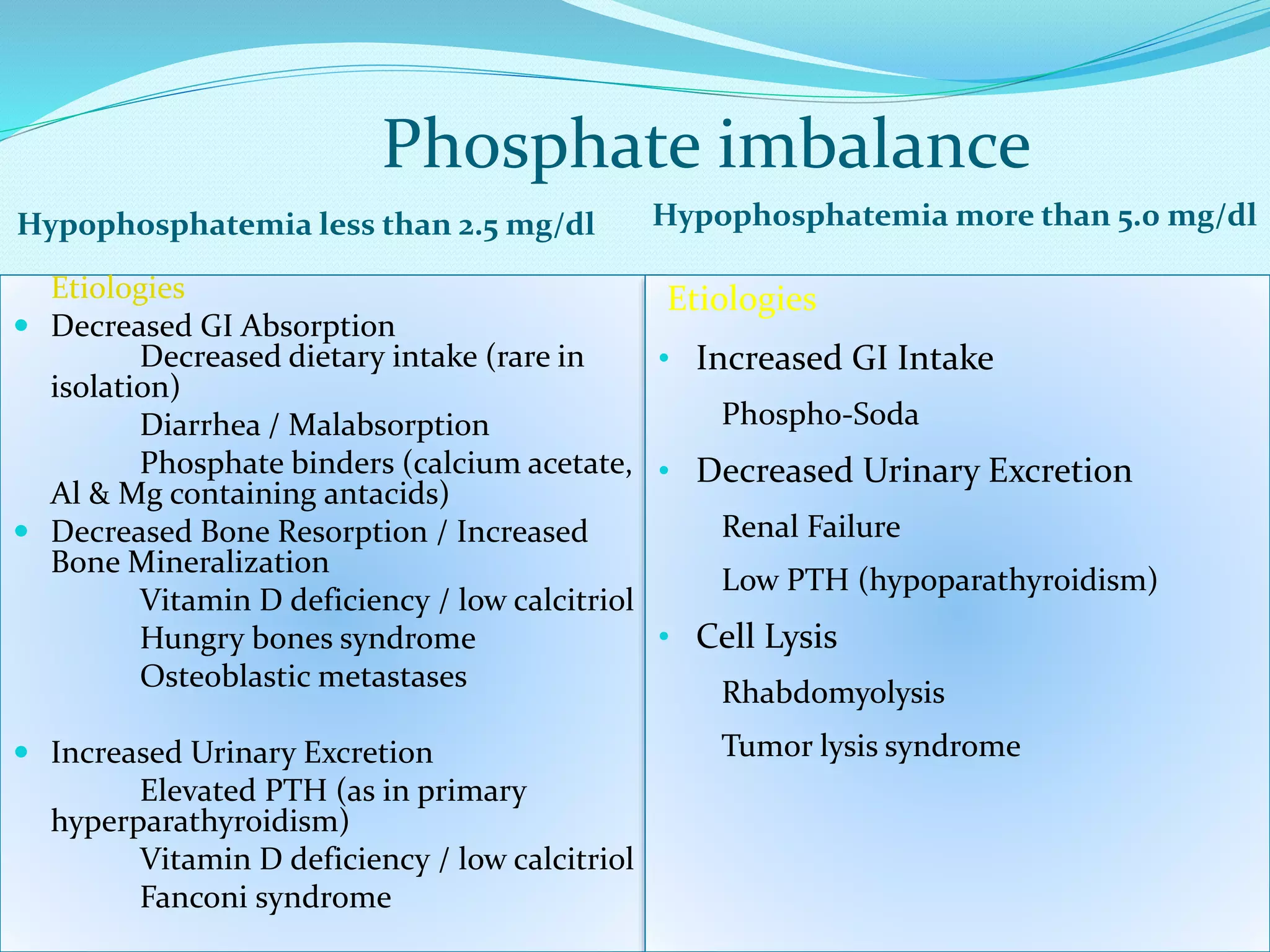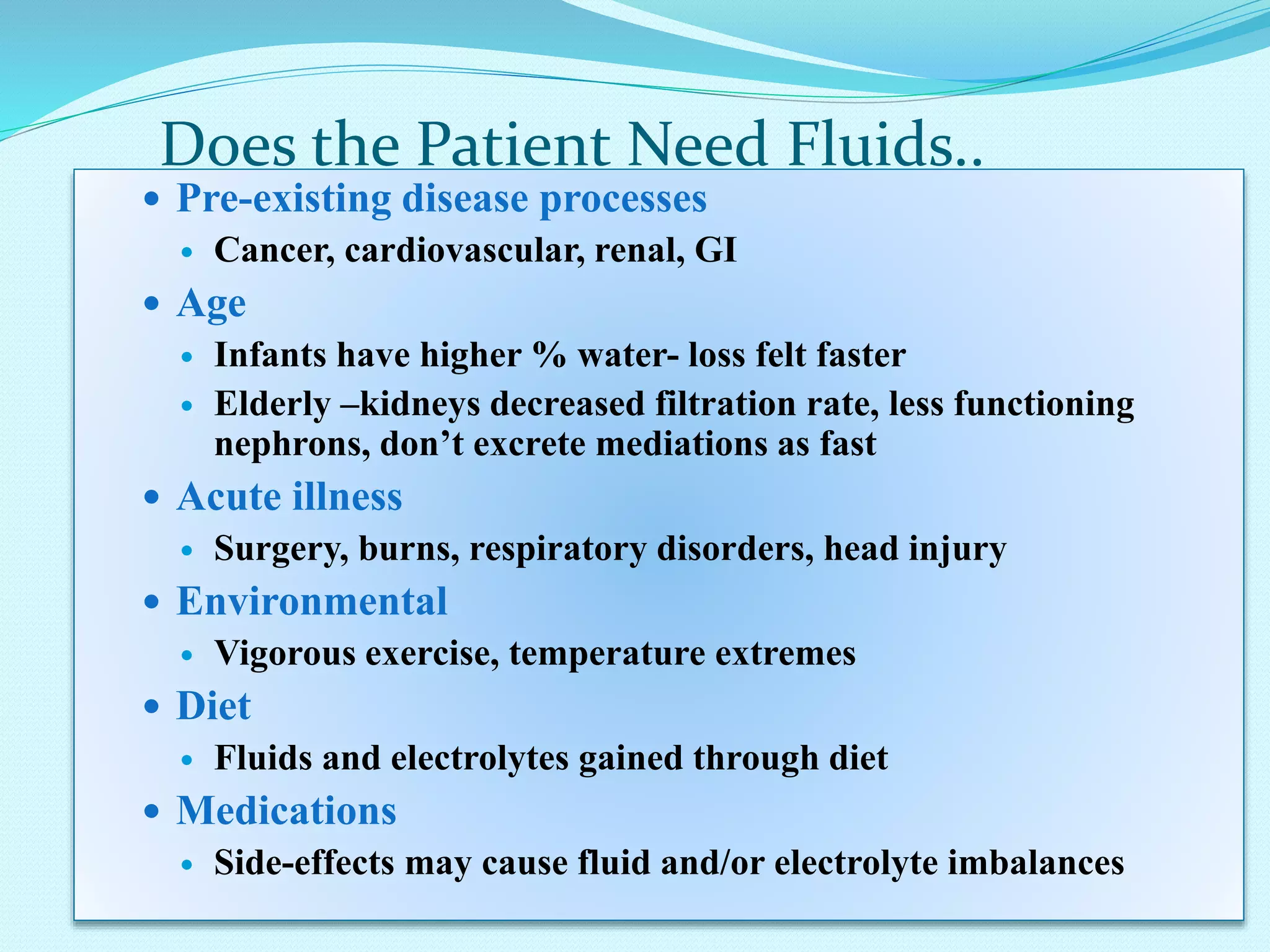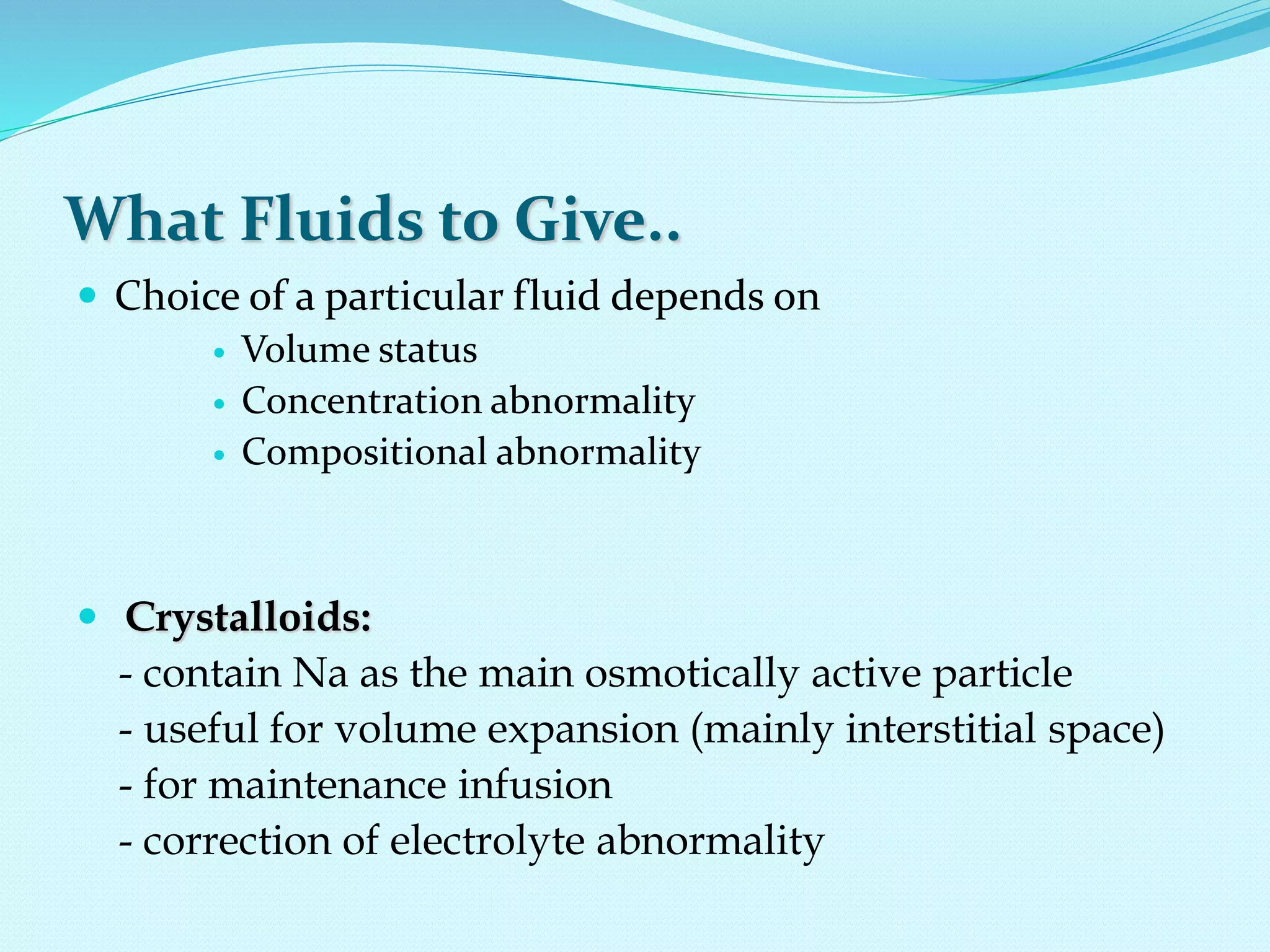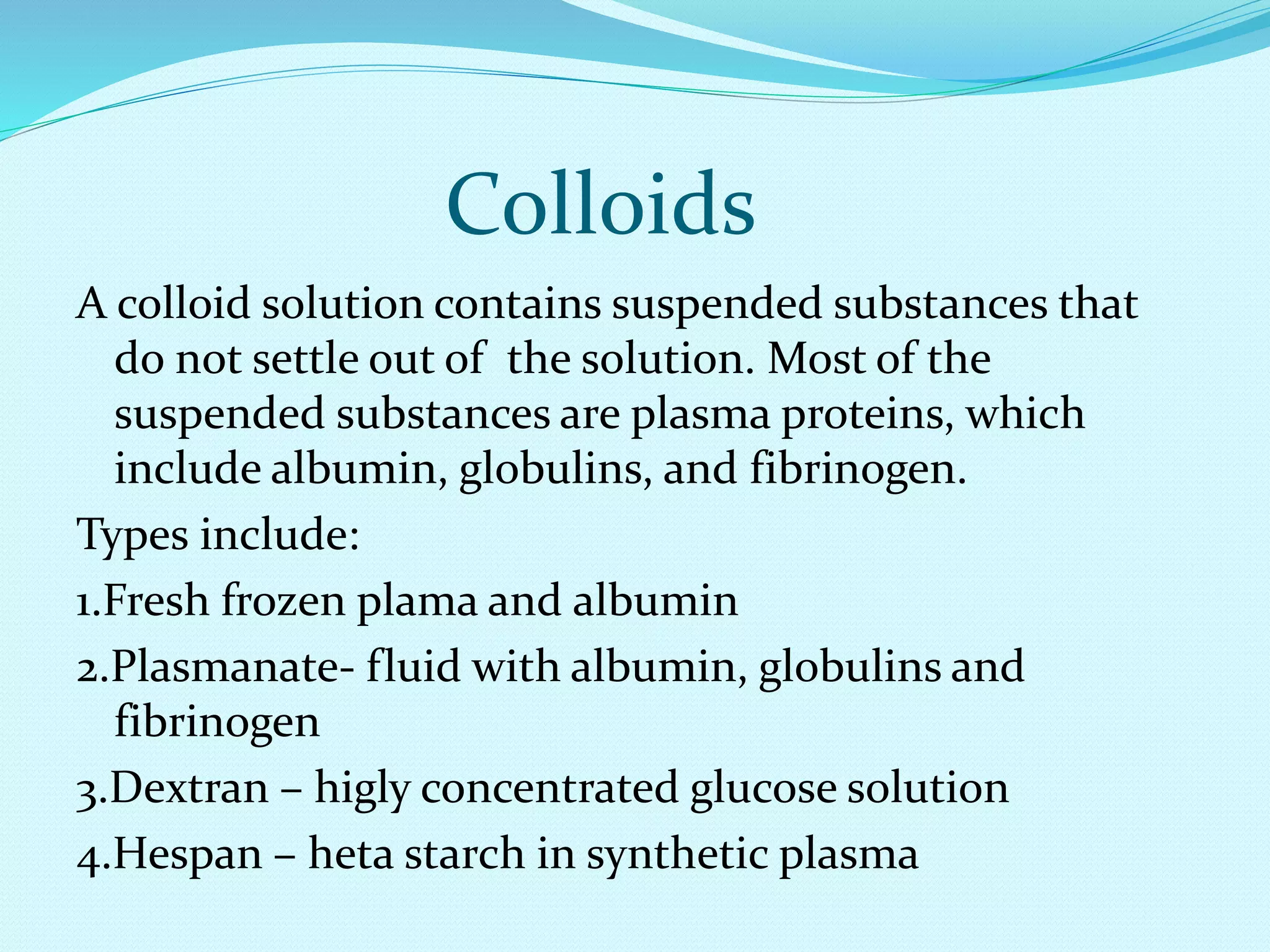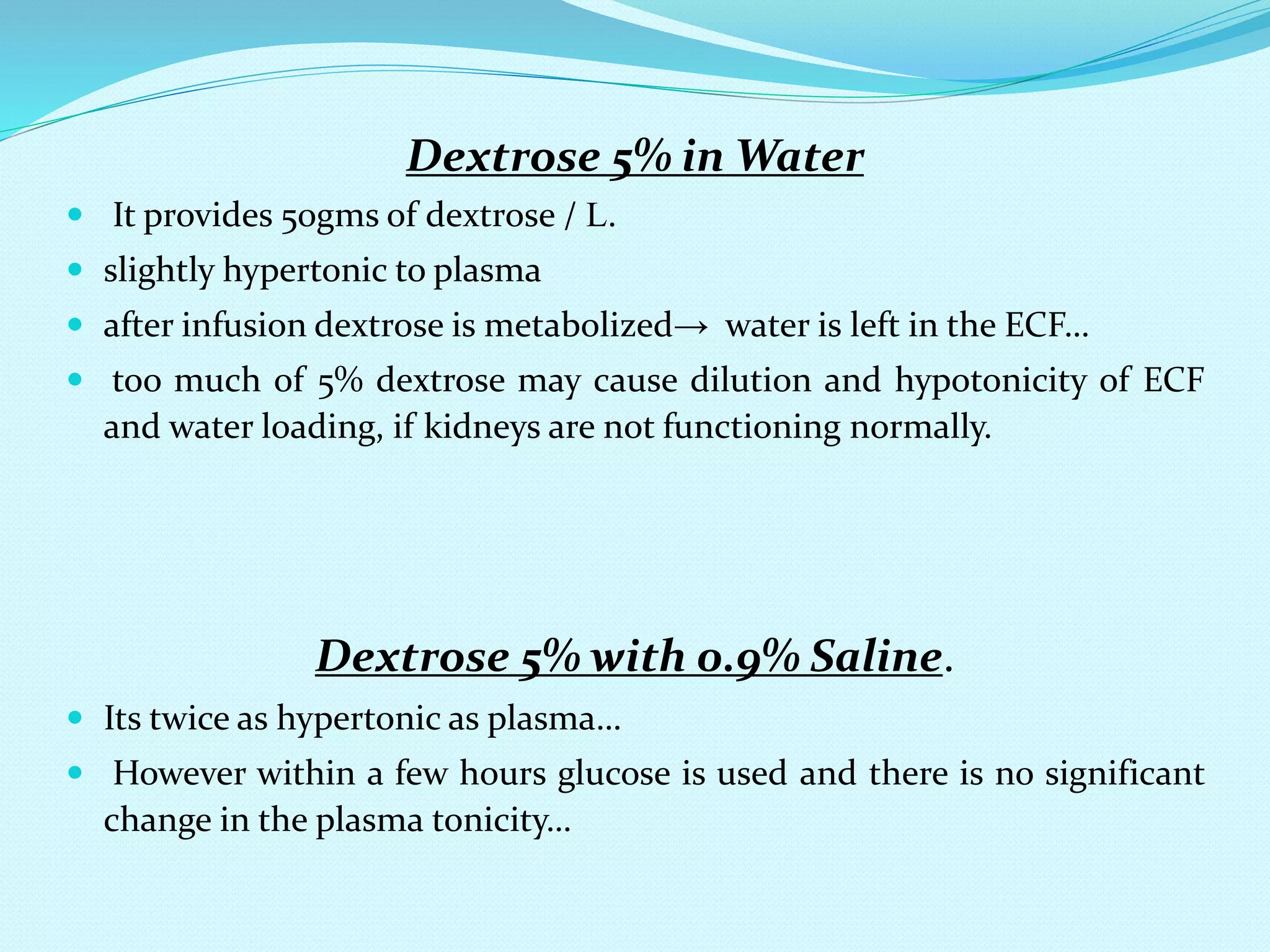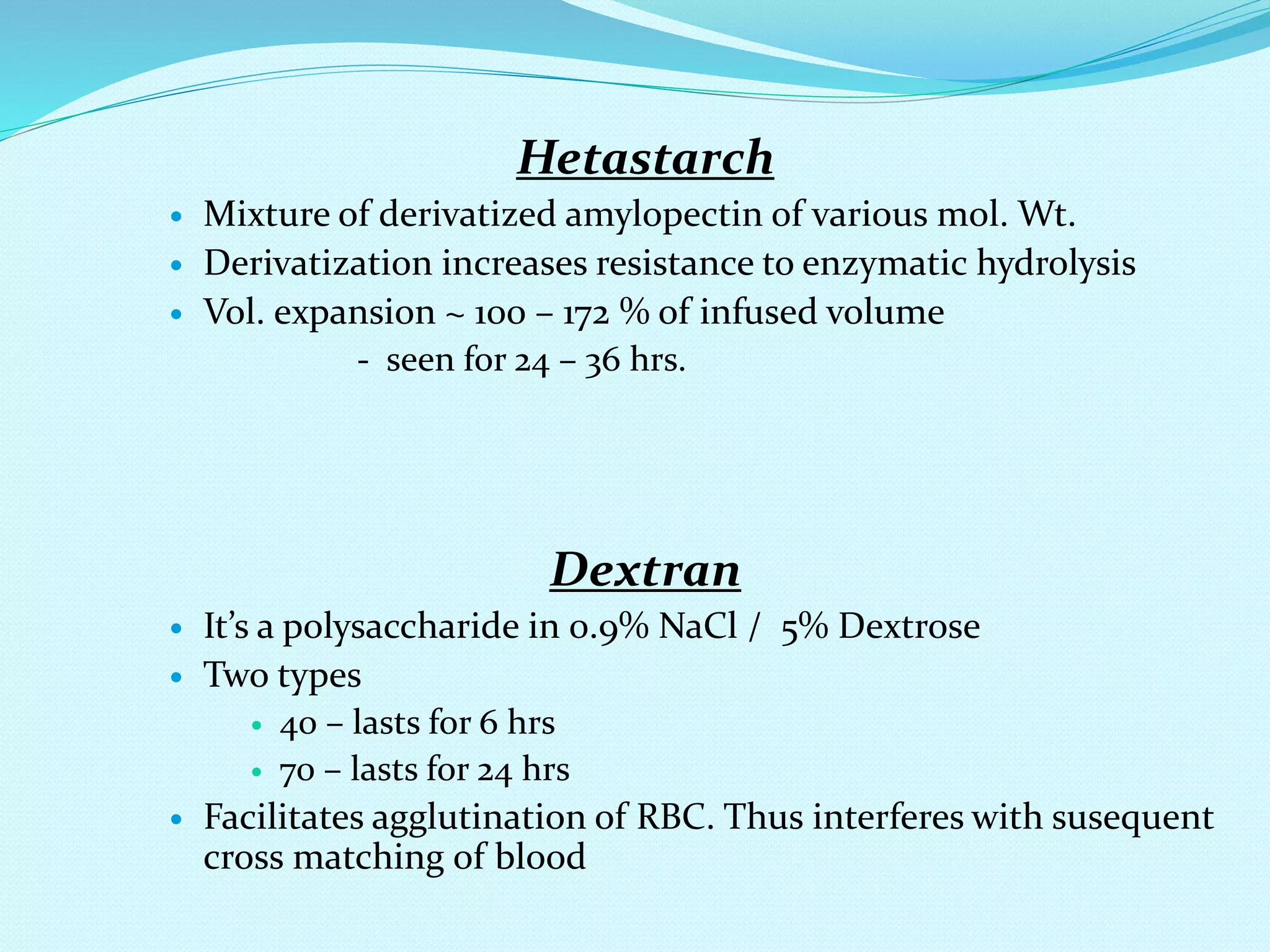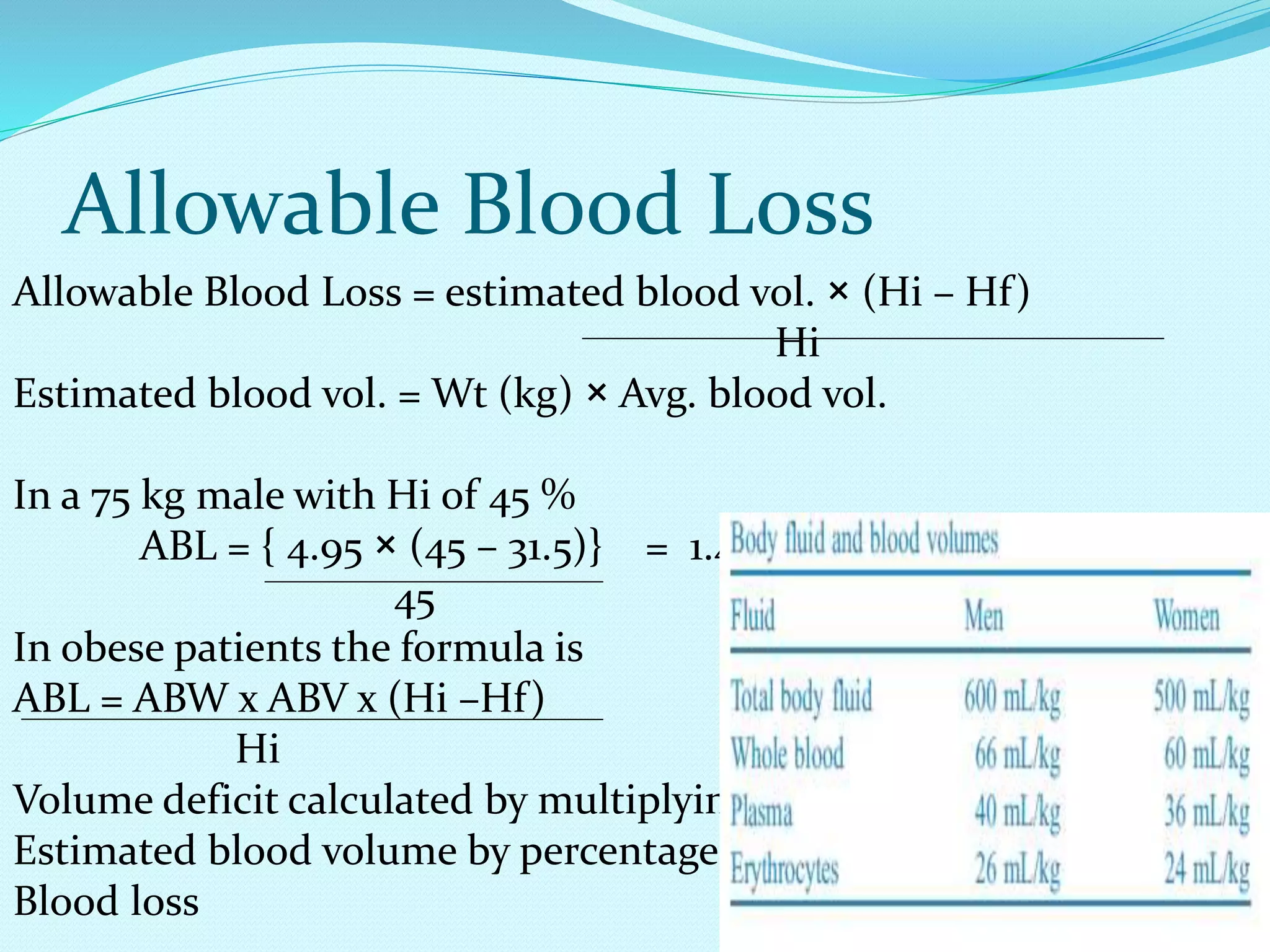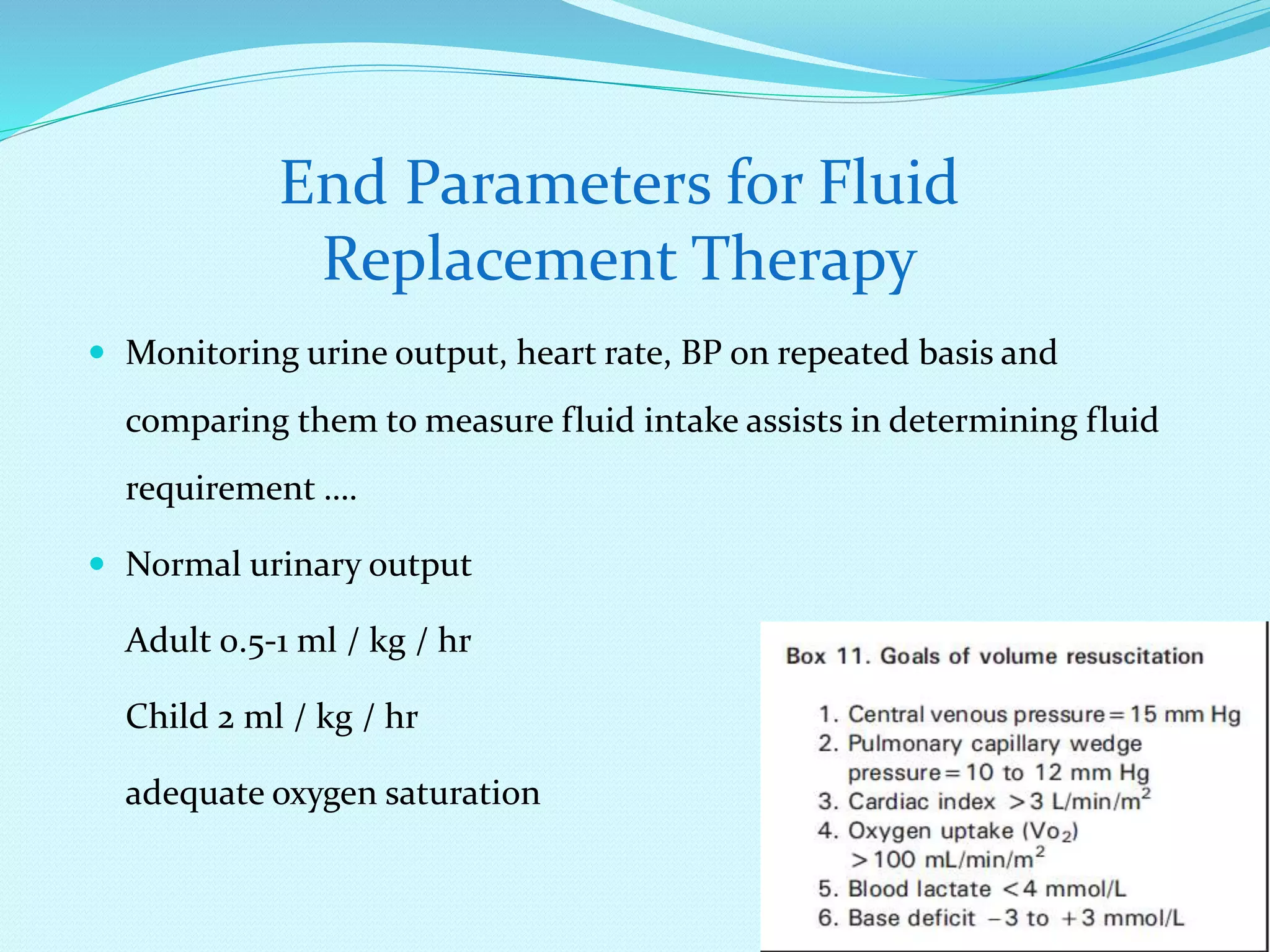This document discusses fluid and electrolyte homeostasis in the human body. It begins by outlining the significance and components of body fluids, including their composition and functional roles. Homeostasis and disorders related to fluid volume and concentration are then examined. Specific electrolyte imbalances involving sodium, acid-base balance, potassium, calcium, chloride, and magnesium are explored in depth. Signs, symptoms, causes, and treatment approaches are provided for various electrolyte disturbances. The document concludes by discussing fluid therapy and principles of fluid management.

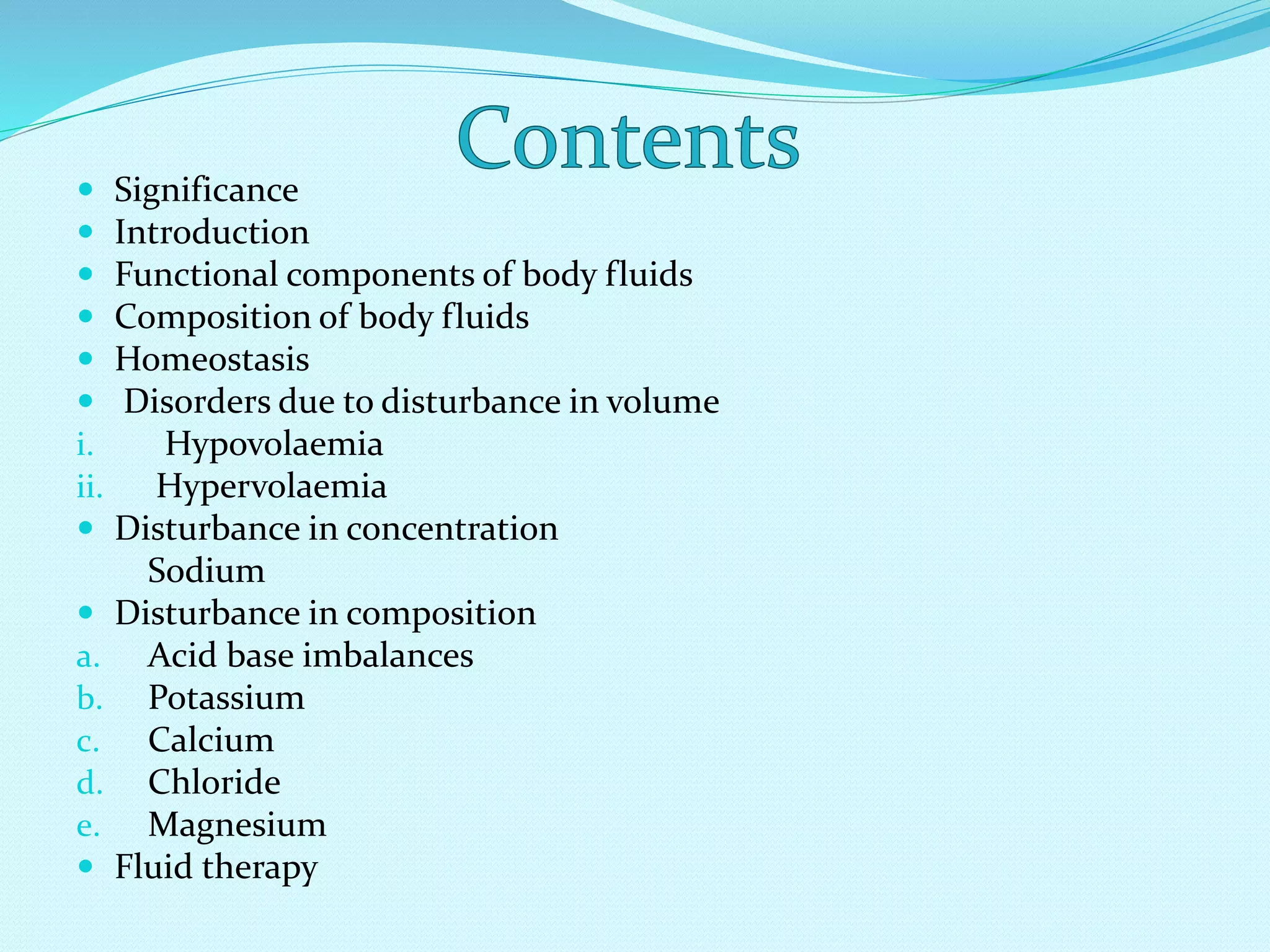






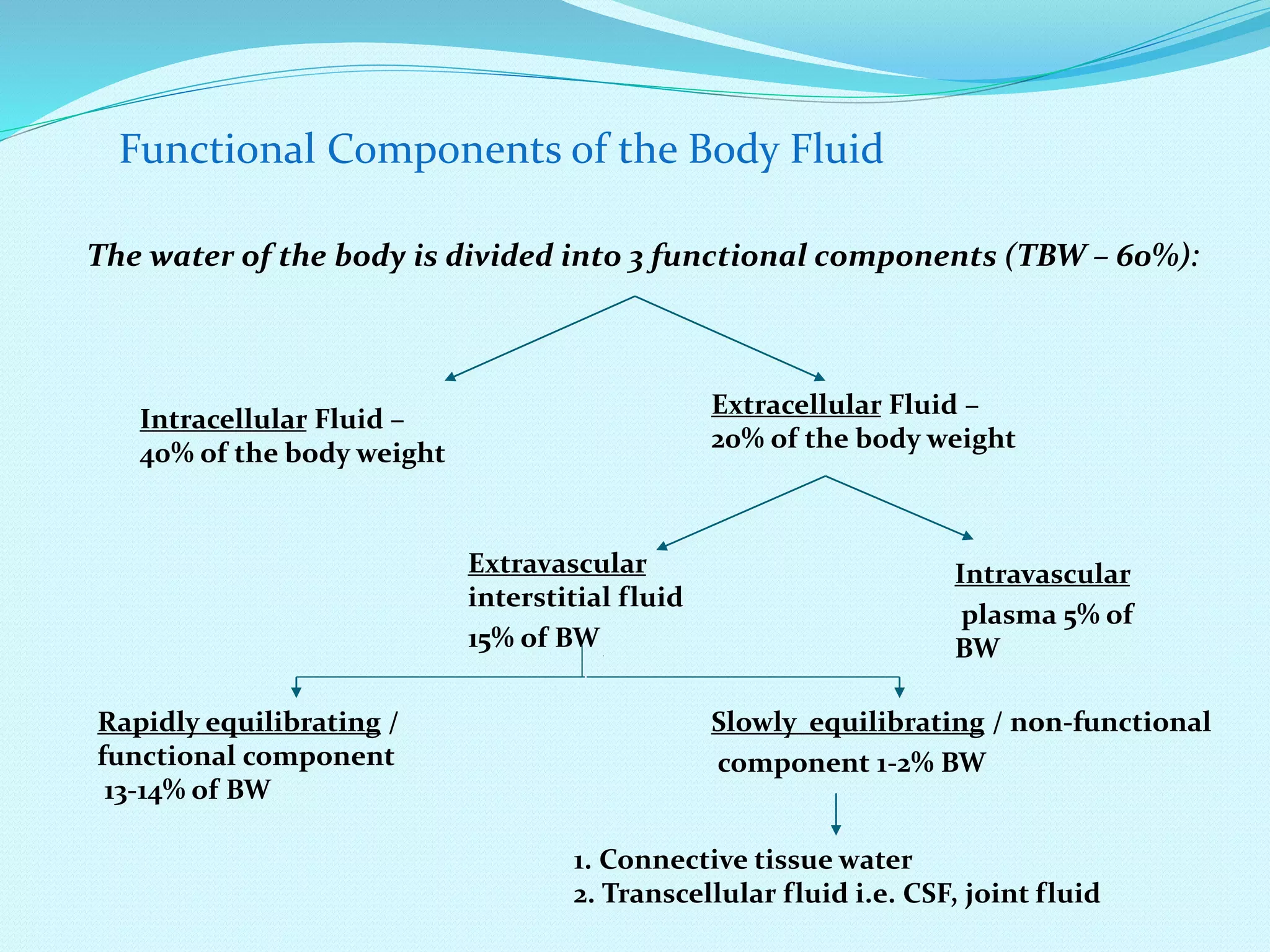


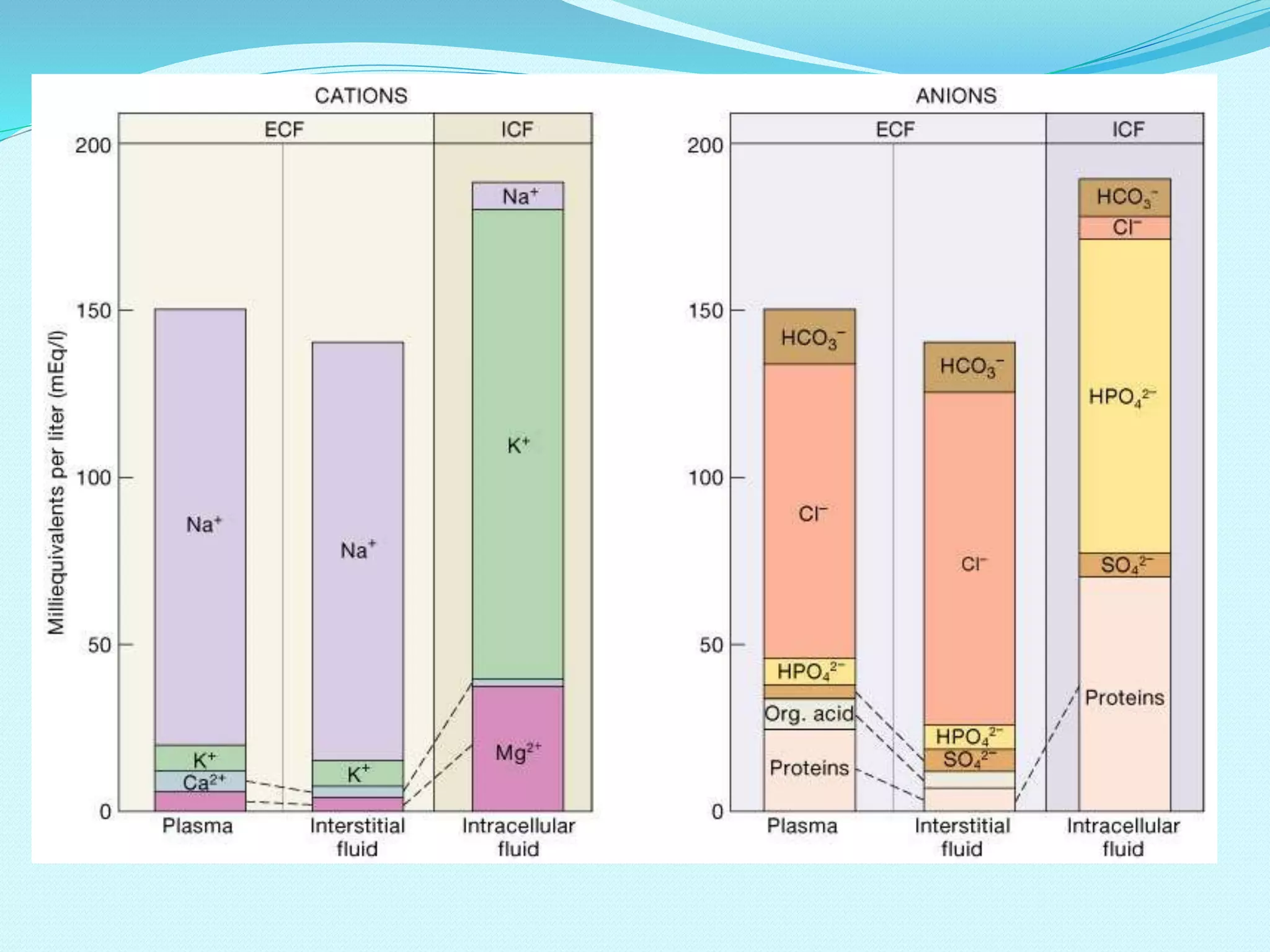






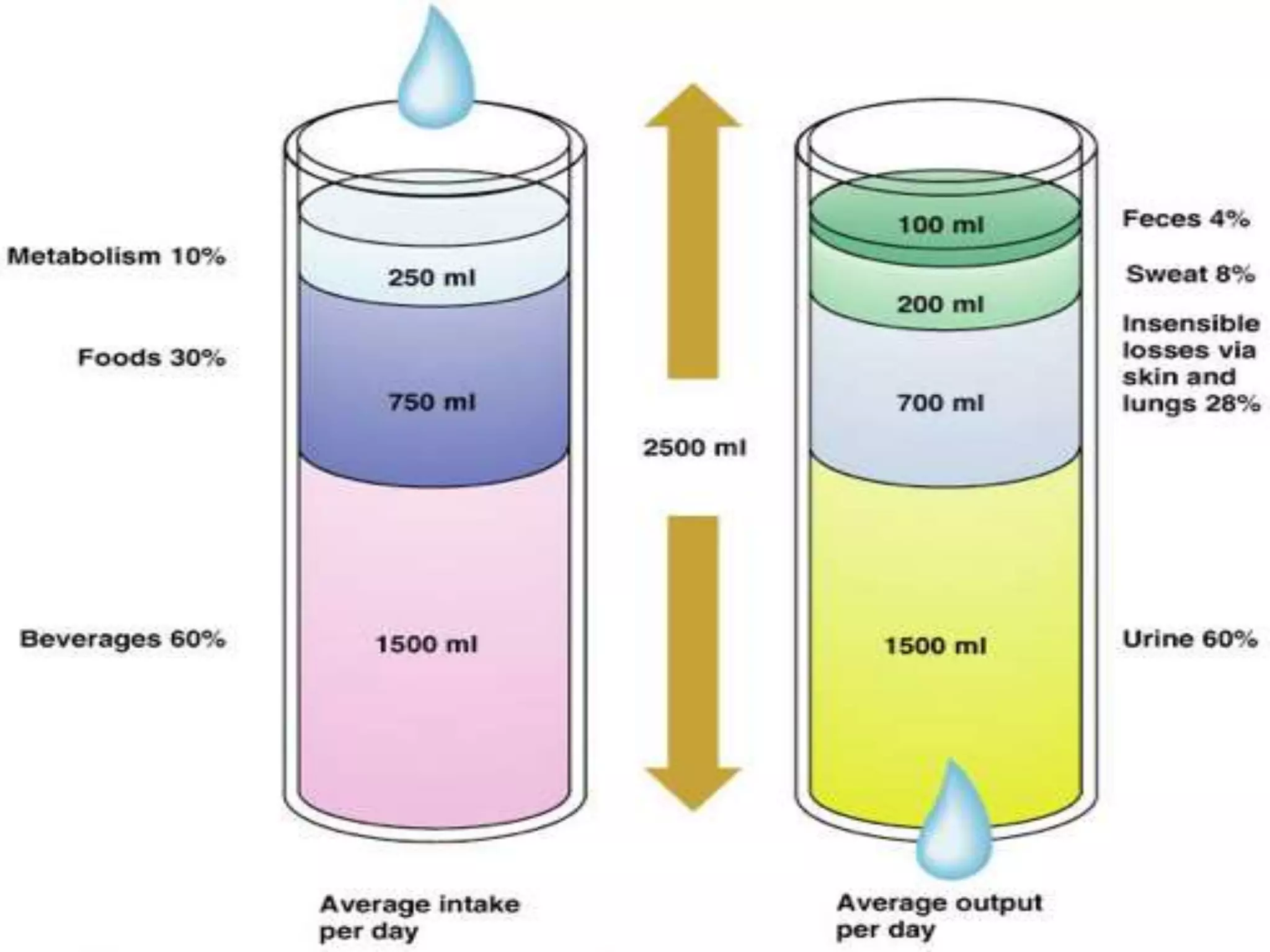




















![Treatment
Hypokalaemia Hyperkalaemia
• Correction of alkalosis/acidosis,
Volume deficits
• Other electrolyte disturbances.
• Replace GI fluids upto upper limits of
loss if person has normal renal
function.
• Oral supplements like fresh fruits and
vegetables or potassium supplements
of 20 to 40 mmol daily.
• Patients with high renal use potassium
sparing diuretics Eg. Spironolactone.
• Identify and treat cause
• Specially check renal function
• 10 – 20 mL intravenous 10% Calcium Chloride/ Calcium
Gluconate over 10 min in patients with ECG abnormalities:
helps in membrane stabilization.
• Sodium bicarbonate 50 mEq/l shift k+ into cells
• 50 mL 50% dextrose plus 10 units short acting insulin over 2-
3min: shifts k+ into cells.
• Monitor plasma glucose and K+ over next (30-60 min)
• Regular Salbutomol nebulizers
• Consider oral or rectal Ca+2
• Resonium (ion exchange resin)
Haemodialysis for persistent hyperkale
Potassium binding resin
Kayexalate – Na polystyrene sulfonate
K Bind – Calcium polystyrene sulfonate
15 - 30 gms orally in sorbitol ( 3ml/gm) every 6 hours [1
gm/kg / dose]
1 gm binds 1meq of K
Can be given per rectally but takes long time for action
and cumbersome](https://image.slidesharecdn.com/fluidandelectrolytes2003secondedition-140721025547-phpapp01/75/Fluid-and-electrolytes-40-2048.jpg)

